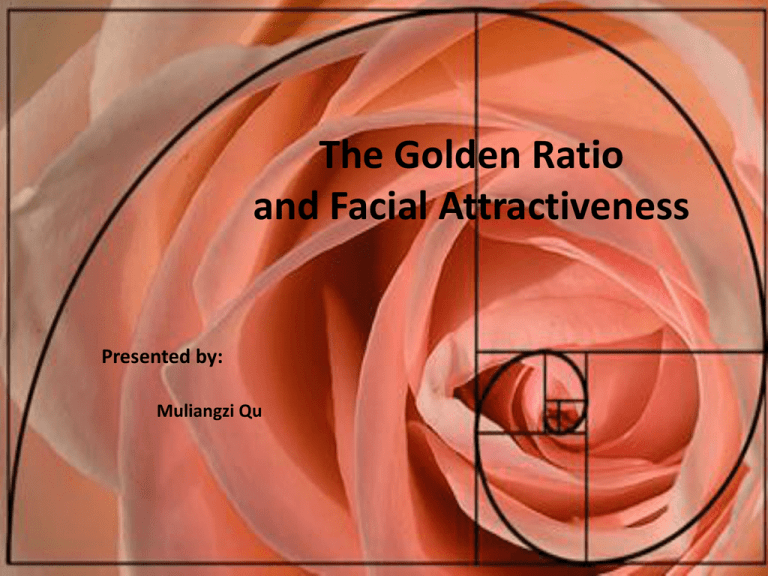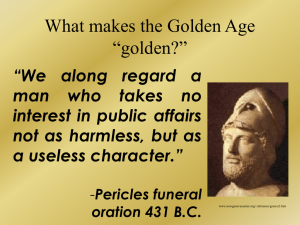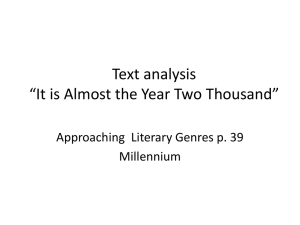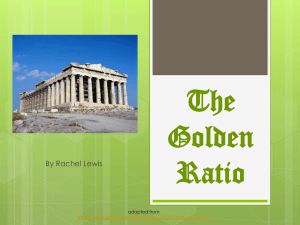
The Golden Ratio
and Facial Attractiveness
Presented by:
Muliangzi Qu
The golden ratio
• Greek letter phi represents the golden ratio.
Its value is:
• The golden ratio is often called the golden section or
golden mean.
•
Other names include extreme and mean ratio, medial
section, divine proportion, divine section, golden
proportion, golden cut and golden number.
calculation
First, we need to know:
In mathematics and the arts, two quantities are in
the golden ratio. If the ratio of the sum of the
quantities to the larger quantity is equal to the ratio
of the larger quantity to the smaller one, the
geometric relationship is said to be equivalent as
the golden ratio. The figure below expressed the
relationship algebraically:
Applications and observations
Architecture
Many of the proportions of the Parthenon are
alleged to exhibit the golden ratio.
Painting
The drawing of a man's body in a pentagram
suggests relationships to the golden ratio.
Book design
Many books produced between 1550 and 1770 show these
proportions 2:3, 1:√3, exactly, to within half a millimeter
Industrial design
Some sources claim that the golden ratio is commonly
used in everyday design, for example in the shapes of
postcards, playing cards, posters, wide-screen televisions,
photographs, and light switch plates.[
Finance
The golden ratio and related numbers are used in the financial
markets. It is used in trading algorithms, applications, and strategies.
Nature
Golden ratio applied to photography with
Golden spiral
Facial Attractiveness
• During the European Renaissance, renowned artists and architects
used an equation known as the "golden ratio" to map out their
masterpieces.
• Thousands of years later, scientists adopted this mathematical formula
to help explain why some people are considered beautiful…and others
are not.
• Many measurements are used to study facial sex appeal, and one of
the measurements is based on the idea of golden ratio.
• These measurements are calculated to determine a person's beauty
on a scale of 1 to 10.
First, measures the length and width
of the face. Then, divide the length
by the width. The ideal result—as
defined by the golden ratio—is
roughly 1.6, which means a beautiful
person's face is about 1 1/2 times
longer than it is wide.
Next, measure three segments of
the face—from the forehead
hairline to a spot between the eyes,
from between the eyes to the
bottom of the nose, and from the
bottom of the nose to the bottom
of the chin. If the numbers are
equal, a person is considered more
beautiful.
Finally, statisticians measure other
facial features to determine
symmetry and proportion. On a
perfect face, the length of an ear is
equal to the length the nose, and the
width of an eye is equal to the
distance between the eyes.
Comparison Diagram
Most people score between 4 and 6, and no one has ever been a perfect
10.
Whose face is the most "perfect," according to the
measurements? No big surprise here!
Brad Pitt!
9.3
Thank you.









